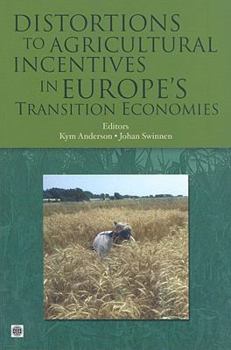Distortions to Agricultural Incentives in Europe's Transition Economies
The vast majority of the world's poorest households depend on farming for their livelihood. During the 1960s and 1970s, most developing countries imposed pro-urban and anti-agricultural policies, while many high-income countries restricted agricultural imports and subsidized their farmers. Both sets of policies inhibited economic growth and poverty alleviation in developing countries. Although progress has been made over the past two decades to reduce those policy biases, many trade- and welfare-reducing price distortions remain between agriculture and other sectors as well as within the agricultural sector of both rich and poor countries. Comprehensive empirical studies of the disarray in world agricultural markets first appeared approximately 20 years ago. Since then the OECD has provided estimates each year of market distortions in high-income countries, but there has been no comparable estimates for the world's developing countries. This volume is the first in a series (other volumes cover Africa, Asia, and Latin America) that not only fill that void for recent years but extend the estimates in a consistent and comparable way back in time--and provide analytical narratives for scores of countries that shed light on the evolving nature and extent of policy interventions over the past half-century. 'Distortions to Agricultural Incentives in Europe's Transition Economies' provides an overview of the evolution of distortions to agricultural incentives caused by price and trade policies in the economies of Eastern Europe and Central Asia that are transitioning away from central planning. The book includes country and subregional studies of the ten transition economies of Central and Eastern Europe that joined the European Union in 2004 or 2007, of seven other large member countries of the Commonwealth of Independent States, and of Turkey. Together these countries comprise over 90 percent of the Europe and Central Asia region's population and GDP. Sectoral, trade, and exchange rate policies in the region have changed greatly since the dissolution of the Soviet Union in 1991, but price distortions remain. The new empirical indicators in these country studies provide a strong evidence-based foundation for evaluating policy options in the years ahead.
Format:Paperback
Language:English
ISBN:0821374192
ISBN13:9780821374191
Release Date:June 2008
Publisher:World Bank Publications
Length:379 Pages
Weight:1.21 lbs.
Dimensions:0.8" x 6.1" x 8.9"
Customer Reviews
0 rating





